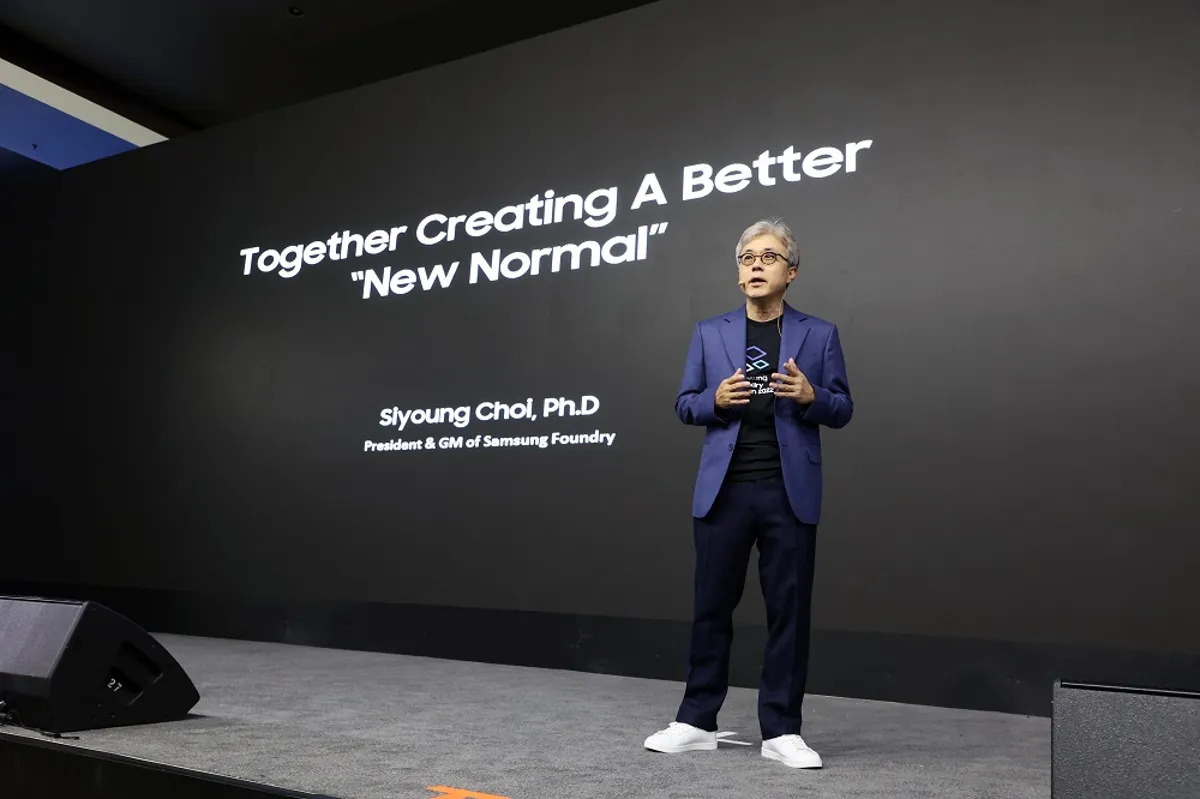Samsung Foundry, one of the largest semiconductor chip manufacturing companies, reveals that it will strive to make semiconductor chips smaller, quicker, and more power-efficient. This was disclosed during the Samsung Foundry Forum 2022 event. The company also announced its plans to produce 2nm and 1.4 nm chips.
Prior to this, the companies leading chip is the 3nm chip. Samsung Foundry started the mass production of the world’s first 3nm chips (SF3E) featuring GAA (Gate All Around) technology months ago. GAA is an overhaul of the basic transistor design, which only happens once in a few years. The company promises massive improvements in power efficiency with the help of this technology. Samsung plans to introduce second-generation 3nm semiconductor chips (SF3) by 2024.
Compared to the first generation of 3nm chips, the company’s second generation chips will feature 20 smaller transistors, resulting in smaller and more power-efficient CPUs for devices such as smartphones, personal computers, cloud servers, and wearable electronics. Using the SF3P+ method, Samsung hopes to enhance its 3nm transistor manufacturing technology and enter mass production by 2025.
Read also: Samsung Unveils Foldables Galaxy Series
The company has stated that it will start the production of 2nm chips by 2025. At this time, the South Korean company will examine the issue of chip-backside power supply. Typically, just one side of a semiconductor chip is used to power transistors and facilitate communication between them. With the new backside power delivery technology, communication and power delivery are divided into opposite sides of a chip. As a result, the chip’s total performance is enhanced.
The company plans to implement its innovative ideas in 2027
In addition to its existing semiconductor production plans, Samsung Foundry has introduced the 1.4nm or SF1.4 node. In 2027, the company plans to start manufacturing its 1.4nm devices in volume. There are also initiatives in progress to advance the business’ existing 2.5D/3D heterogeneous integration packaging methodology.
According to Dr Si-young Choi, Samsung Electronics’ president and head of the Foundry Business, 2027 will be a pivotal year for the company. The company plans to mass-produce 1.4nm chips, raise its advanced nodes production capacity by a factor of three, and expand its non-mobile (e.g., high-performance computing and automotive) foundry portfolio by 50 per cent.
He continues, given that 3nm semiconductors are currently being manufactured at scale. It seems unlikely that Samsung would fail to meet its 2025 and 2027 targets. “To ensure the targets are met, resources must be allocated, and “foundry platforms customized for each application” must be developed. Moving ahead, Samsung will prioritize the construction of cleanrooms as part of its “Shell-First” strategy for its foundry operations. The fab equipment to fill them is still in the process, and the method will remain adaptable so Samsung can quickly pivot to meet the needs of various markets”.
Samsung focuses on automotive and 5G/6G communication markets
The automotive, HPC or High-Performance Computing, Internet of Things, and 5G industries are forecast to account for half of the South Korean company’s semiconductor demand. Manufacturing chips for the automotive and HPC markets will leverage the company’s improved 4nm technologies. It presently manufactures 28nm eNVM chips for its automotive customers but aspires to provide 14nm eNVM solutions by 2024 and 8nm eNVM solutions in the not-too-distant future.
Samsung currently produces 8nm RF, or Radio Frequency, chips for the telecommunications industry and is developing 5nm RF chips that may be released soon. The “cleanrooms” are something the firm is considering for its semiconductor production facilities. It will be simpler for the business to keep fab equipment and access it during times of high demand if it is separated into these divisions.




